Gel Staining Picture Frames
Over the past year, our entryway has been my first priority for decorating during each changing season. My logic is simple: first impressions matter.
I don’t mean that I’m overly focused on what other people think when they enter our home (although I do want our entryway to be warm and welcoming). But first and foremost, I’m focused on how we feel when we come through the front door. Our homes are our havens, and I want my first feeling when I step through my front door to be filled with comfort and joy.
There might be a lot of projects not yet finished throughout the house, but I want my first thought when I come home to be “ahhhhhh”. No matter what else might be going on, or how busy I am, putting my decorating focus on the entryway is a way to make that happen.
When I got set to redecorate after the holidays, one word kept cycling through my mind whenever I thought of what I wanted our entryway to convey: Home.
I had a vision to incorporate the warmth of antiqued wood with vintage touches to tell the story of home, as it’s written in our hearts. I’ve always been enthralled with looking at old vintage photos of towns compared to how they look today, so I got the idea to find historical photos from each of our hometowns, plus our current hometown. My husband and I both moved a lot while we were kids, but we both have meaningful connections to the places we’ve lived and identify as our hometowns.
My design challenge was figuring out how to display those photos, and I didn’t want to buy brand new store-bought frames that would ruin the aesthetic of the historical photos I planned to use. This is where my pack-rat personality trait pays off!
For years, I have collected picture frames that I’ve found at thrift stores, flea markets, and garage sales. I keep them stored away in plastic storage boxes, and whenever I need a frame, I can usually find something that works.
But could I find THREE frames that would reasonably match??
As luck would have it, I managed to dig out three frames from my collection that had identical outside measurements. One already had the perfect patina for my vintage-inspired design. The other two were a matched set that, ironically, didn’t match anything.

You can see in this close-up photo that the orange-ish colored wood and gold leaf edging on the matching pair just weren’t going to work with the rich depth and warmth of the wood on the third frame. This is where I got the idea to try out the gel stain to change their look.

Disclosure: This is NOT a sponsored post, and I have received NO compensation for sharing any of these products. Some links to products that follow may be affiliate links, and I might earn a commission if you make a purchase through that link. This usually amounts to cents, not dollars, and helps to support the projects featured on this blog. I only recommend products that I have used from companies that I have found to be trustworthy. Read my full disclosure here.
I had already planned another refinishing project using General Finishes Java Gel Stain, so this seemed like a good time to play around with it before using it on a bigger piece. I started by removing the paper covering on the backs of the two framed prints. Fortunately, the glue was so old that it lifted with almost no effort.

Next, I carefully bent each of the brads to allow the cardboard backing, mat, and print to be popped out of the frame. The mats were in great shape and were neutral colored, so I was able to reuse them when framing my vintage prints of our hometowns.


The glass was fitted so tightly in the frames that I ultimately had to remove one entire edge of brads to allow it to slide out. I did this by gently pulling each one with a pair of pliers–being very careful to avoid breaking the glass.
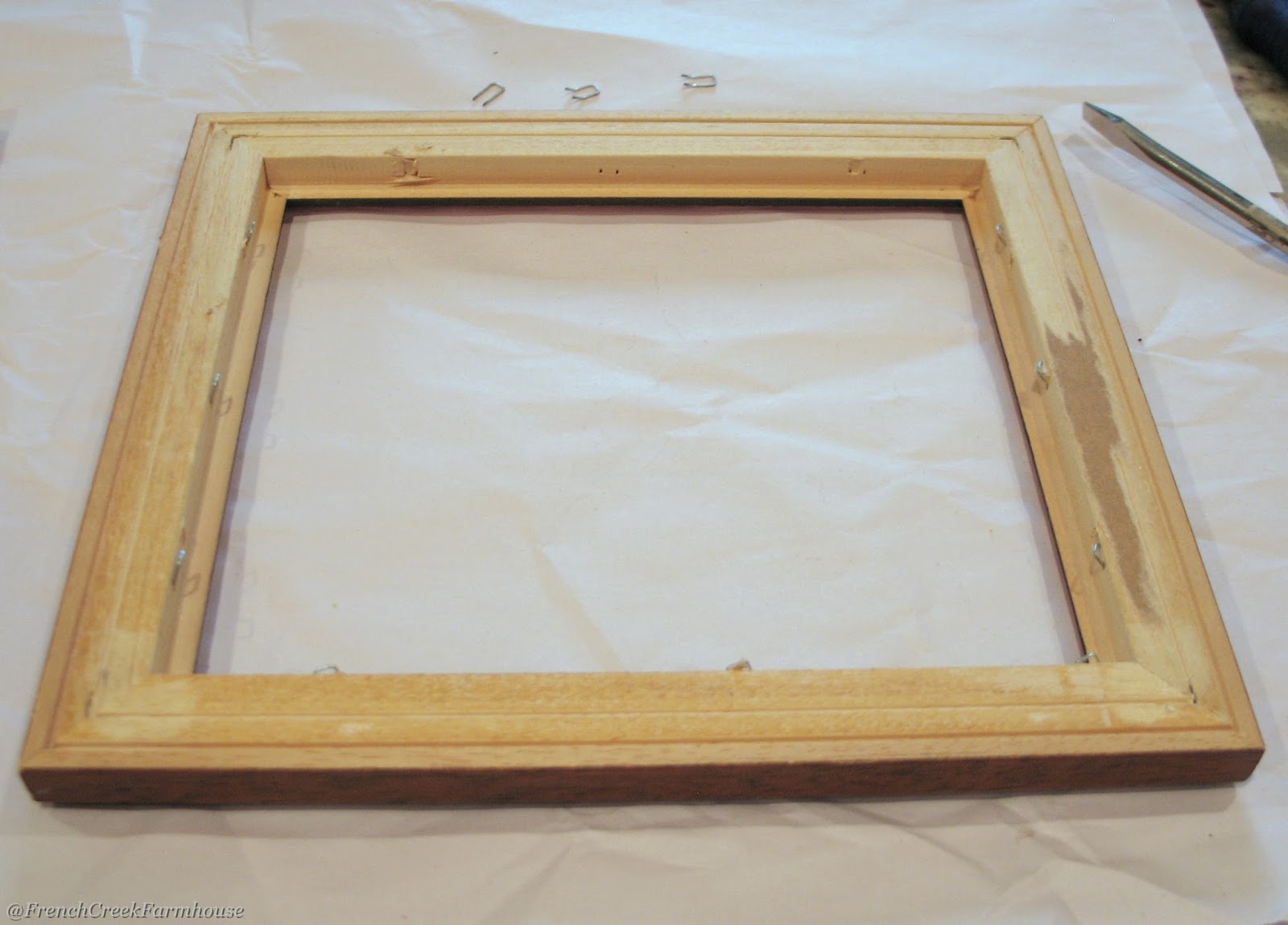
Next, I stirred up the gel stain. If you’ve never used gel stain before, it’s important to know that it behaves very differently from traditional wood stain. For starters, it is a thicker substance that is heavily pigmented. Imagine a combination of paint and stain in one. When you first open the can, it needs to be mixed very, very well–but shaking is not recommended because it will introduce air bubbles into the product. You’ll notice how the product is initially separated on my stir stick–some parts appear thin and oily, while other parts are thick and goopy. Mixing well is key!!

The other difference when using gel stain is that you don’t have as much workable time as you do with traditional wood stain. Basically, as soon as you put it on, you need to be wiping it off. If you are doing a large piece, working quickly and in small sections is important.
For the frames, I applied a thin coat over the entire surface with a foam brush, then immediately wiped it off with a quarter-folded paper towel. I had a stack of pre-folded paper towels already sitting beside my work area so that I didn’t waste any time. A quarter-fold makes it easy to always have a clean edge of your towel ready to wipe–you want this because wiping with a soiled edge will give you an uneven finish.


After allowing the first coat to dry for several hours, I came back and repeated the process. Ultimately, I needed 3 coats to knock down the orangey finish and achieve the look I wanted. With gel stain, three coats is really the limit–any more, and it will never fully cure.
I allowed my frames to sit, untouched, for 48 hours to fully cure. I also did this project indoors with a room temperature between 60-70oF to make sure that the winter weather didn’t put a kink in my plans. You’ll notice that the finish has a tacky feel before it cures, unlike traditional stain that is dry to the touch much faster. Patience is your friend during this process. If, after 2-3 days, the finish is still tacky, it is likely because the coats were applied too thick and/or without enough drying time between coats. This is a finicky finish, so you’ll need to adjust your technique to the product’s requirements. But the end result is well worth doing it right!
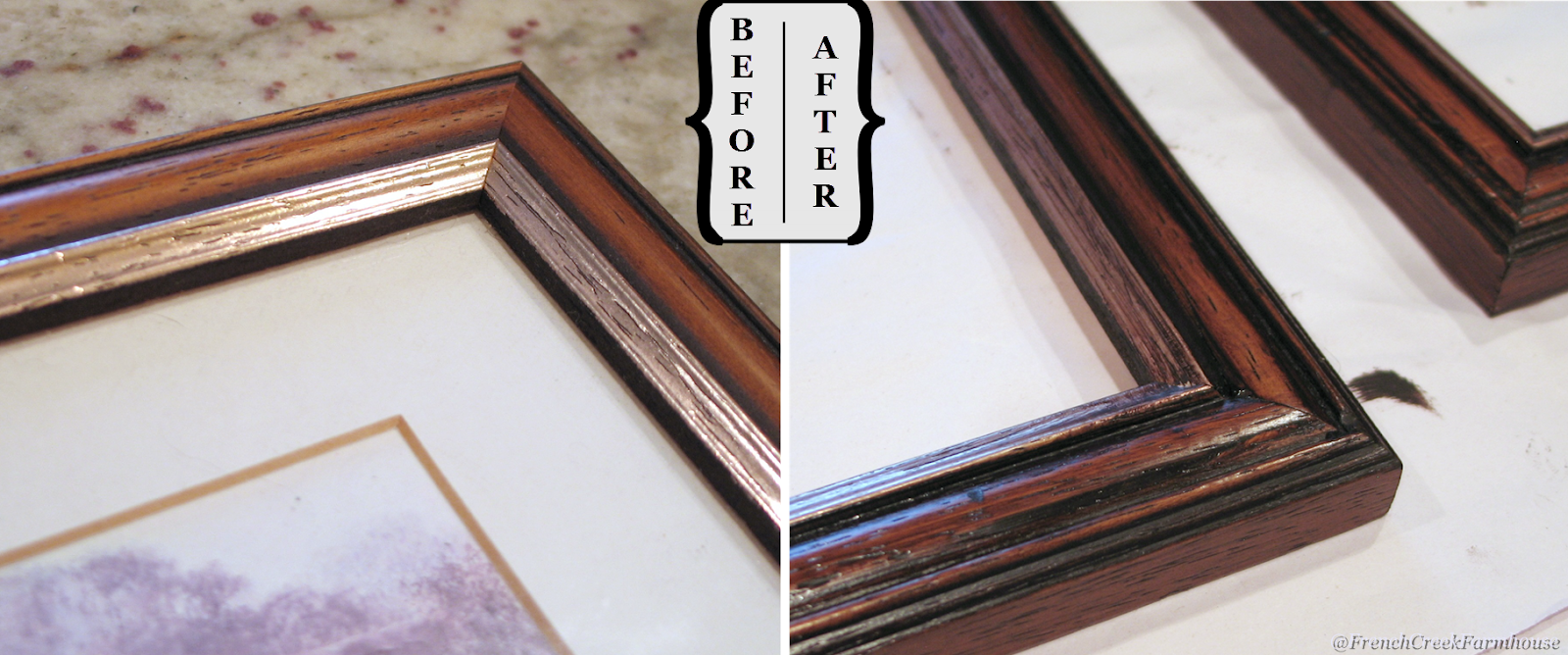
You’ll also notice in this before and after comparison that the gold leaf edge wouldn’t really accept the stain like the wood did (as expected). I remedied this with two coats of General Finishes Lamp Black Milk Paint on that edge, and it worked beautifully.
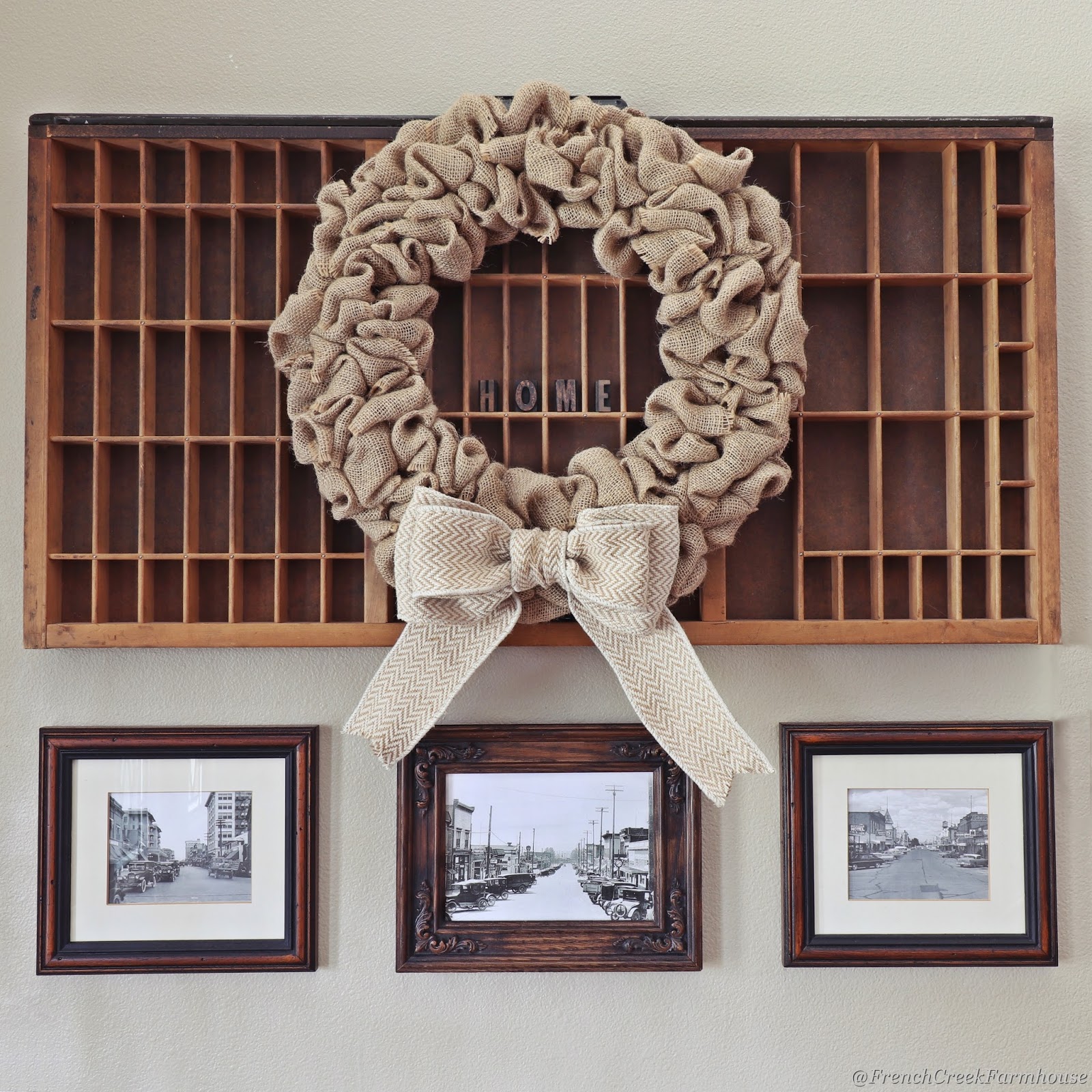
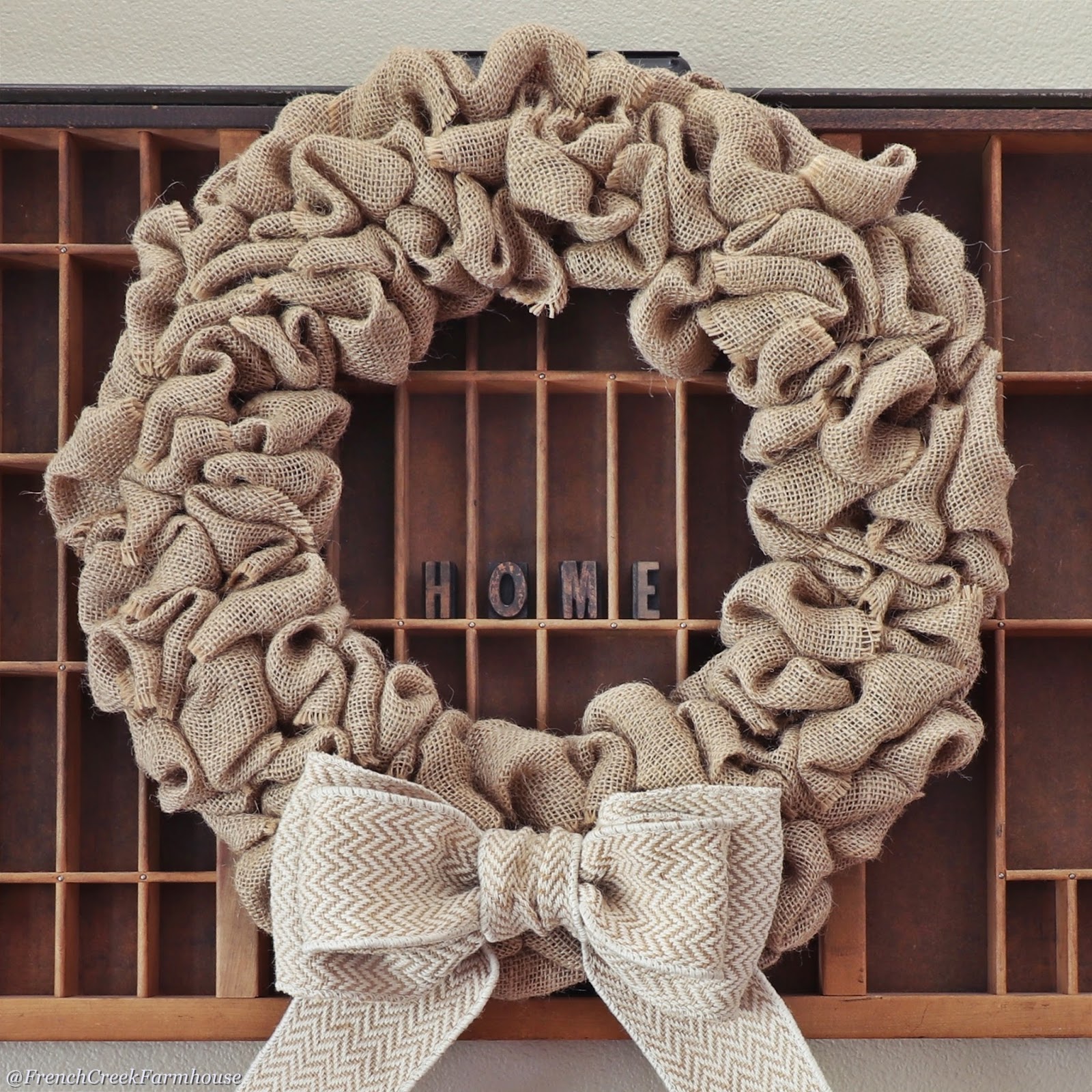
For the finished project, I paired my trio of framed prints with a letterpress tray I found at my favorite local antique store, and some vintage letterpress type blocks found by my sweet friend Traci (owner of Rustic Eye) spelling out my inspiration word: HOME. Encircled by the burlap ribbon wreath that I made with my sister and niece for our Christmas Day craft project, I am absolutely in love with the way this vignette welcomes us every time we come through the front door.
Now I’m curious if I’m the only one who has these inspiration words come to them while they are decorating. Does it happen to you too? What’s your current home decor inspiration word? Tell me about it in the comments below–I’d love to know!
PROJECT SOURCES
General Finishes Java Gel Stain
General Finishes Lamp Black Milk Paint
Foam Brushes
Vintage Letterpress Block Letters

Do you love hunting for vintage treasures as much as I do?
Get my free vintage & junk hunting journal
Let’s be email pen pals! Sign up to join our community, and get your free printable PDF Vintage Hunting Journal. This is so good!
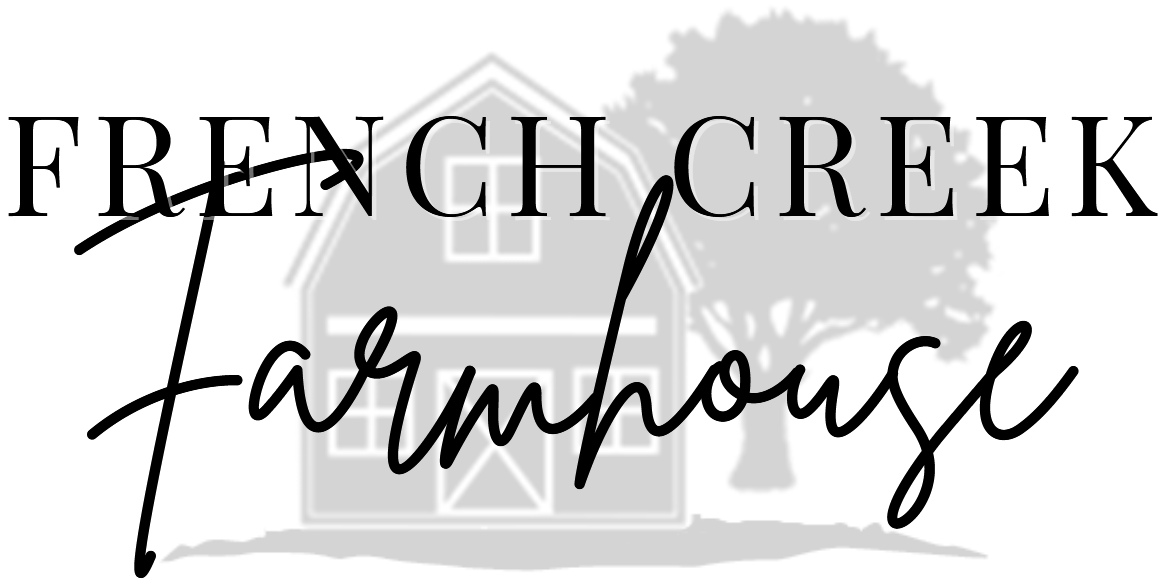
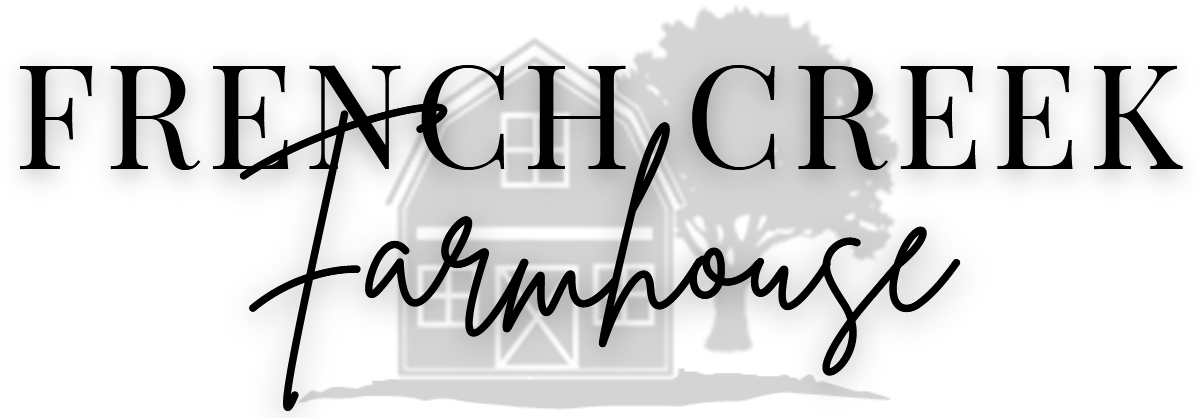


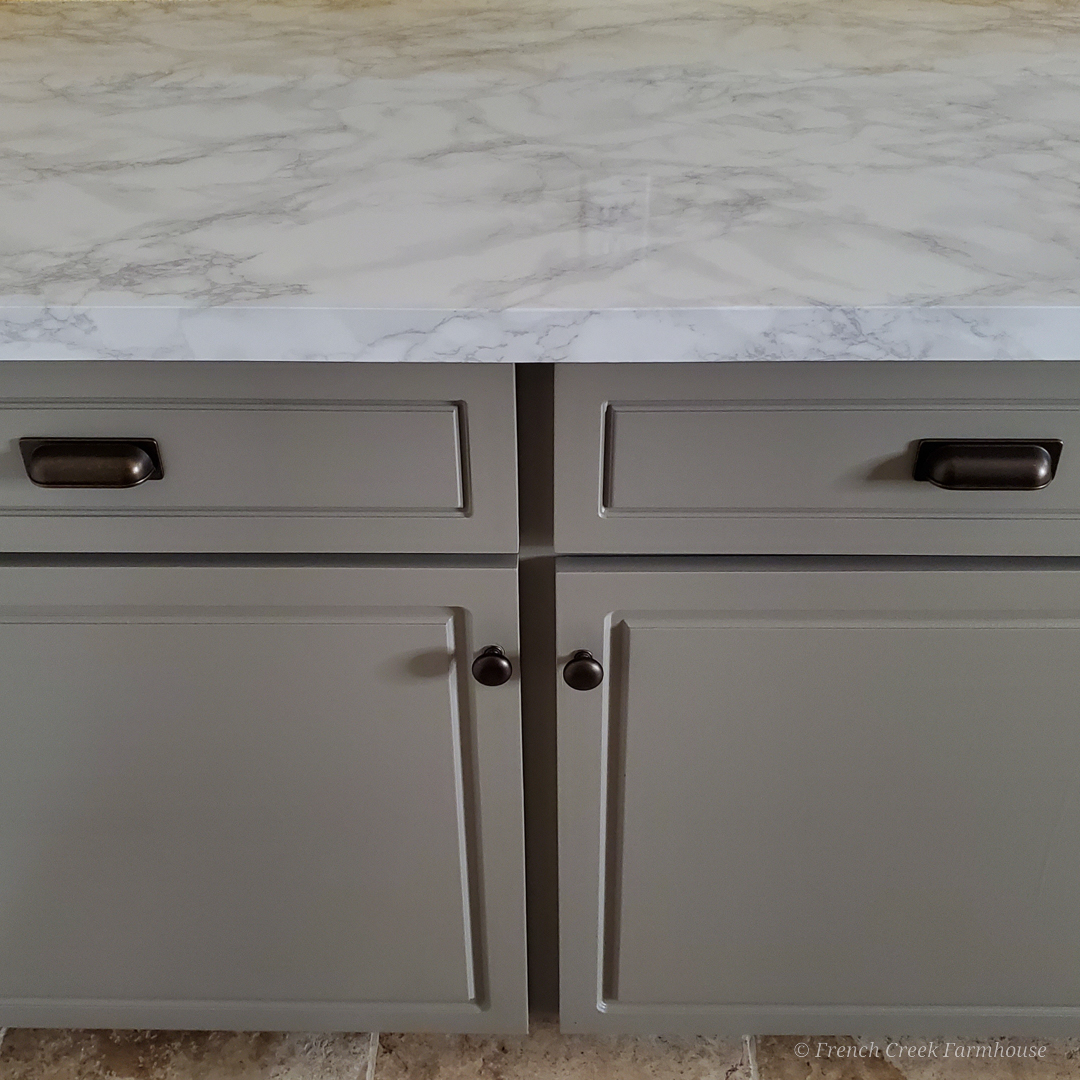
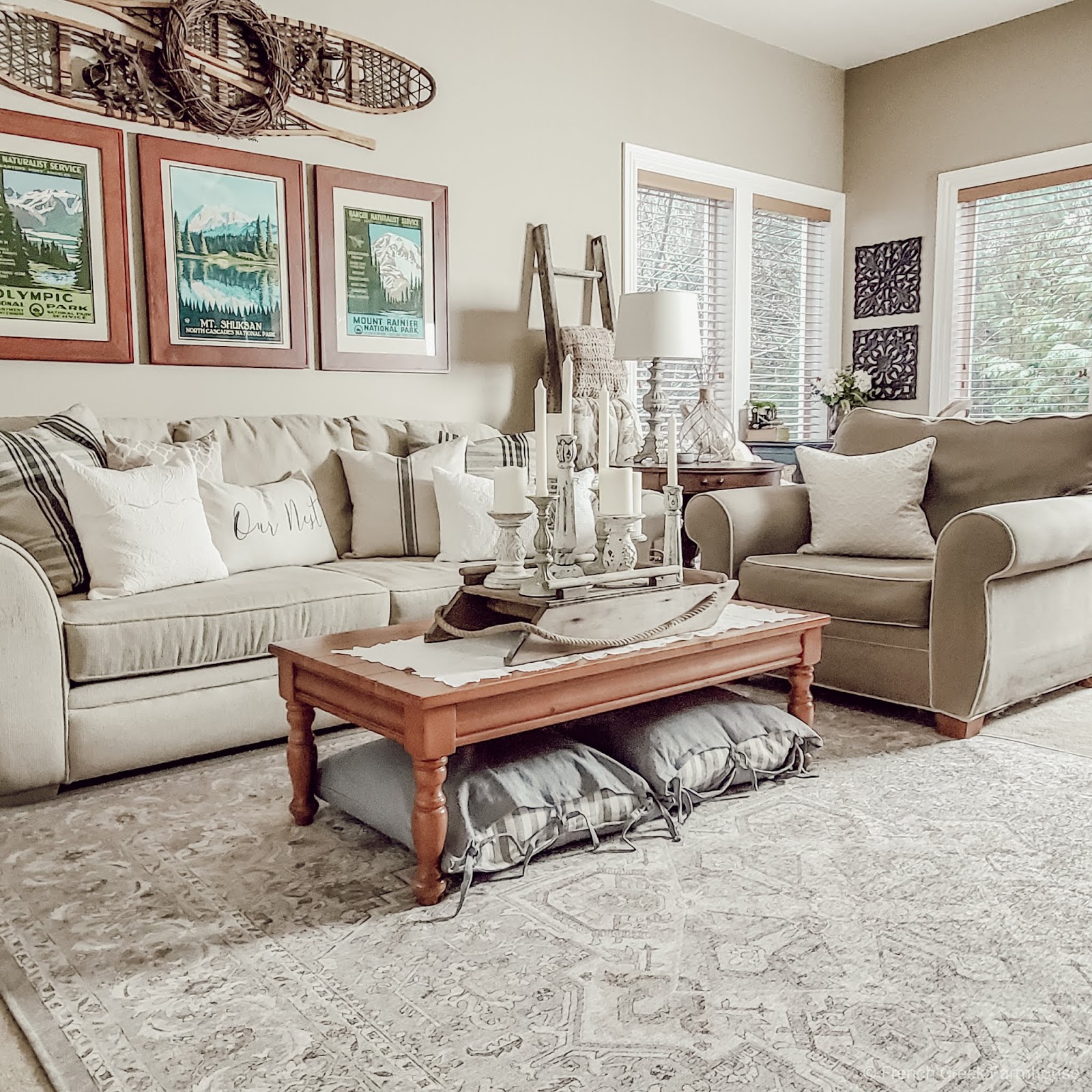
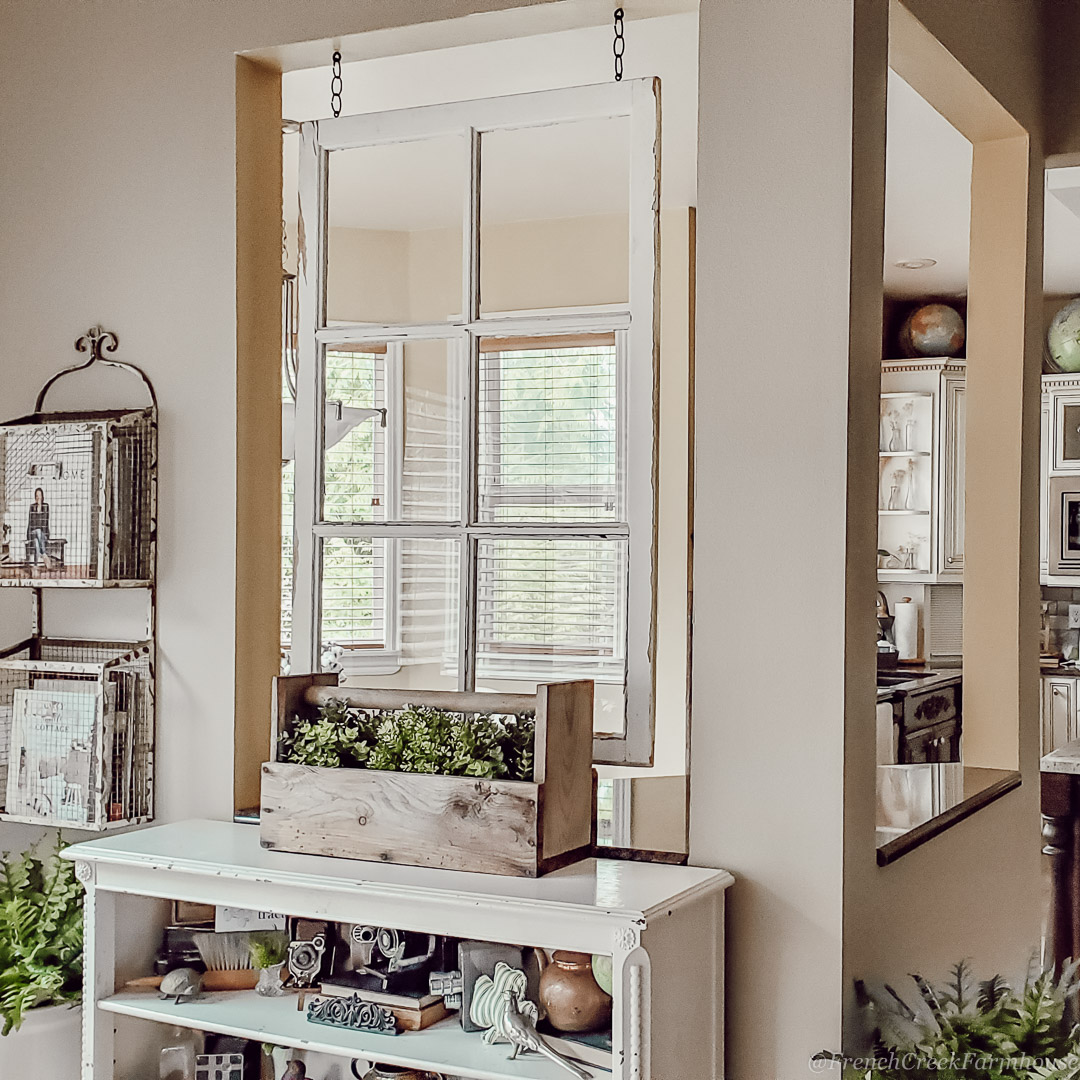
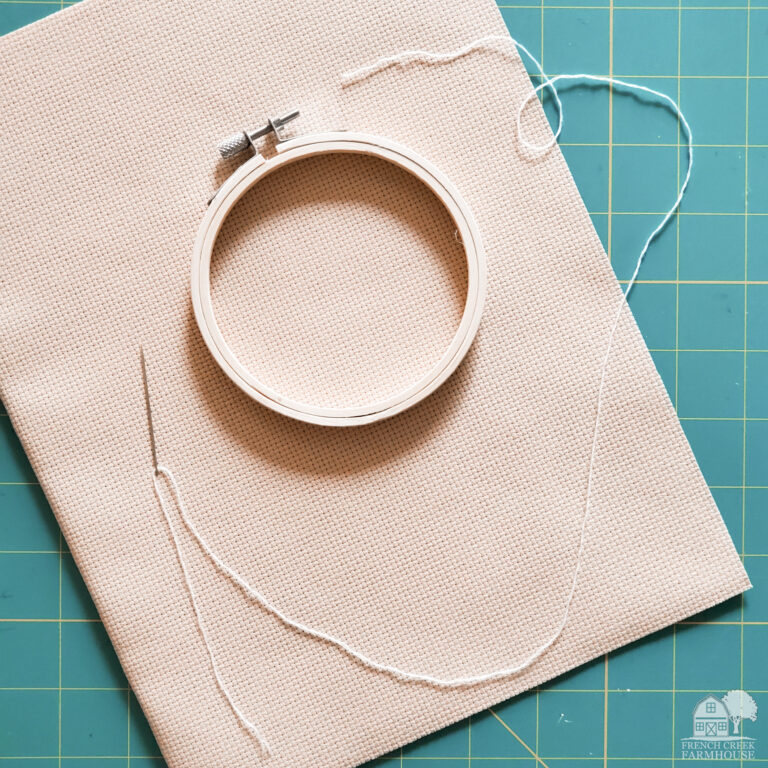
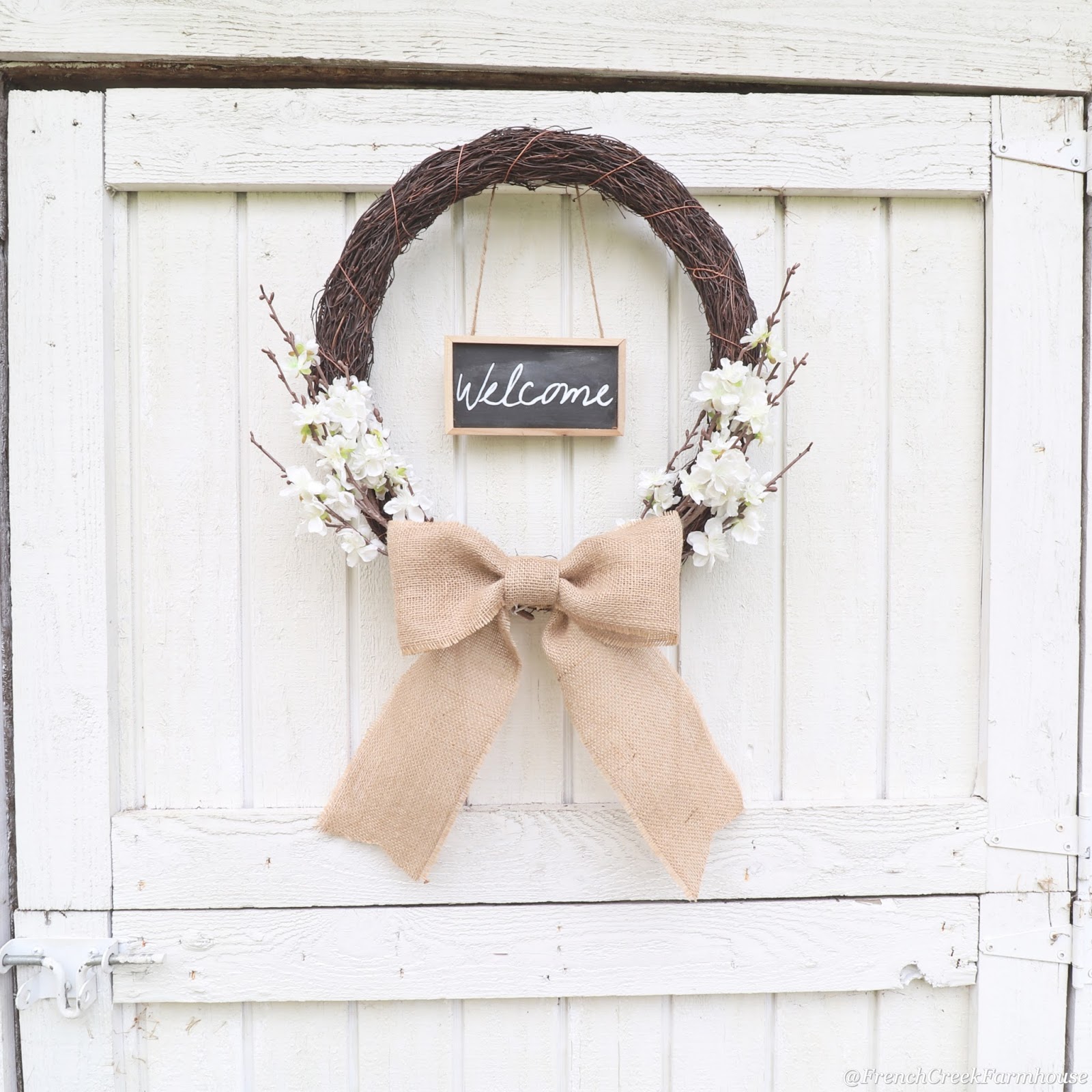
What a great idea to place the towns where you have both lived. Your gallery is so beautiful and such an inviting display! Thanks so much for joining our Friday Friends Parade Linky Party!
Thank you so much for the kind words, Janine! xo
I bought a beautiful round dining table, sight unseen, on Facebook Marketplace. It’s mahogany I believe, with carved claw feet and a carved edge cut into the side of the top. I didn’t notice until I got home that the stain on the top of the table was uneven. Beneath a beautiful glossy finish the color was dark in a wide center strip, and the sides (which I think may have had constant sun exposure) paler by several shades. AAuk! I can’t give this as a gift, as it is.
My question is, is there any path to restoration that does not require complete stripping? I’m thinking that it probably would be best to sand the surface, then stain and give a new finish – coats of sealer and polyester.
If you know of an alternative that does not require extreme expertise,(maybe that gel product?), please tell me. Thanks!
Hi Pat,
It sounds like it’s hard to tell if there is a true stain, or if the wood faded in sun-exposed areas. In either case, I understand your predicament and desire to even out the finish. If you aren’t looking to do an overhaul, but want a lower-investment option, then gel staining could be a good option for you. I did a tutorial in this post that might help you decide if it’s the right product for you: https://www.frenchcreekfarmhouse.com/2018/03/gel-staining-picture-frames.html
Best of luck with your beautiful table!
My home decor inspiration word would be – Cozy. My decorating goal is for our home to speak to everyone that graces our doorstep that they are welcome. Happened upon your blog while looking for guidance on refinishing a delightful dining table I found at Goodwill. While focused to find answers to some of my questions, your way of sharing drew me to read more, and most importantly encouraged me to continue my journey with a dining table that stole my heart.
I’ve refinished projects before, usually just some sanding and paint, but this piece spoke to me from across the store to take it home, give it some TLC, yet appreciate and maintain it’s natural beauty. I just can’t cover her in paint and hide that beautiful mahogany, nor the blemishes garnered from her life with others. So the journey continues- for her, let’s call her Scarlet, to continue gathering family and friends around to share meals and conversations; for me, to enhance my refinishing skills so my kids and/or grandchildren can appreciate the beauty of something historical.
Thank you for sharing your knowledge and inspiration.
That is so wonderful to hear! I’m sure that “Scarlet” has many years of family memories ahead! 🥰